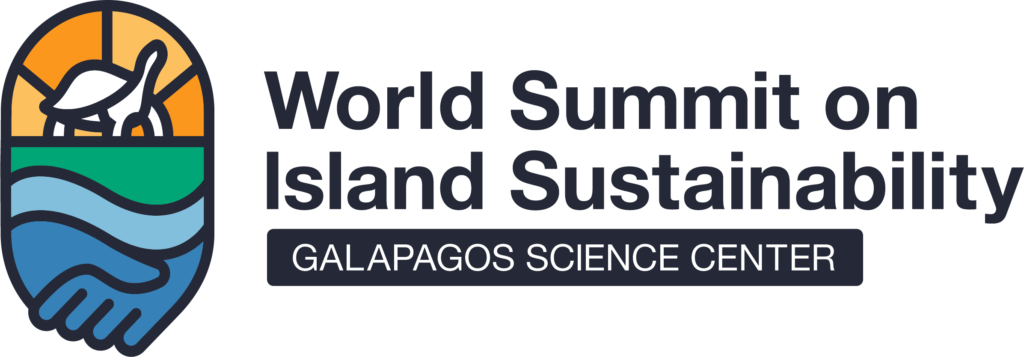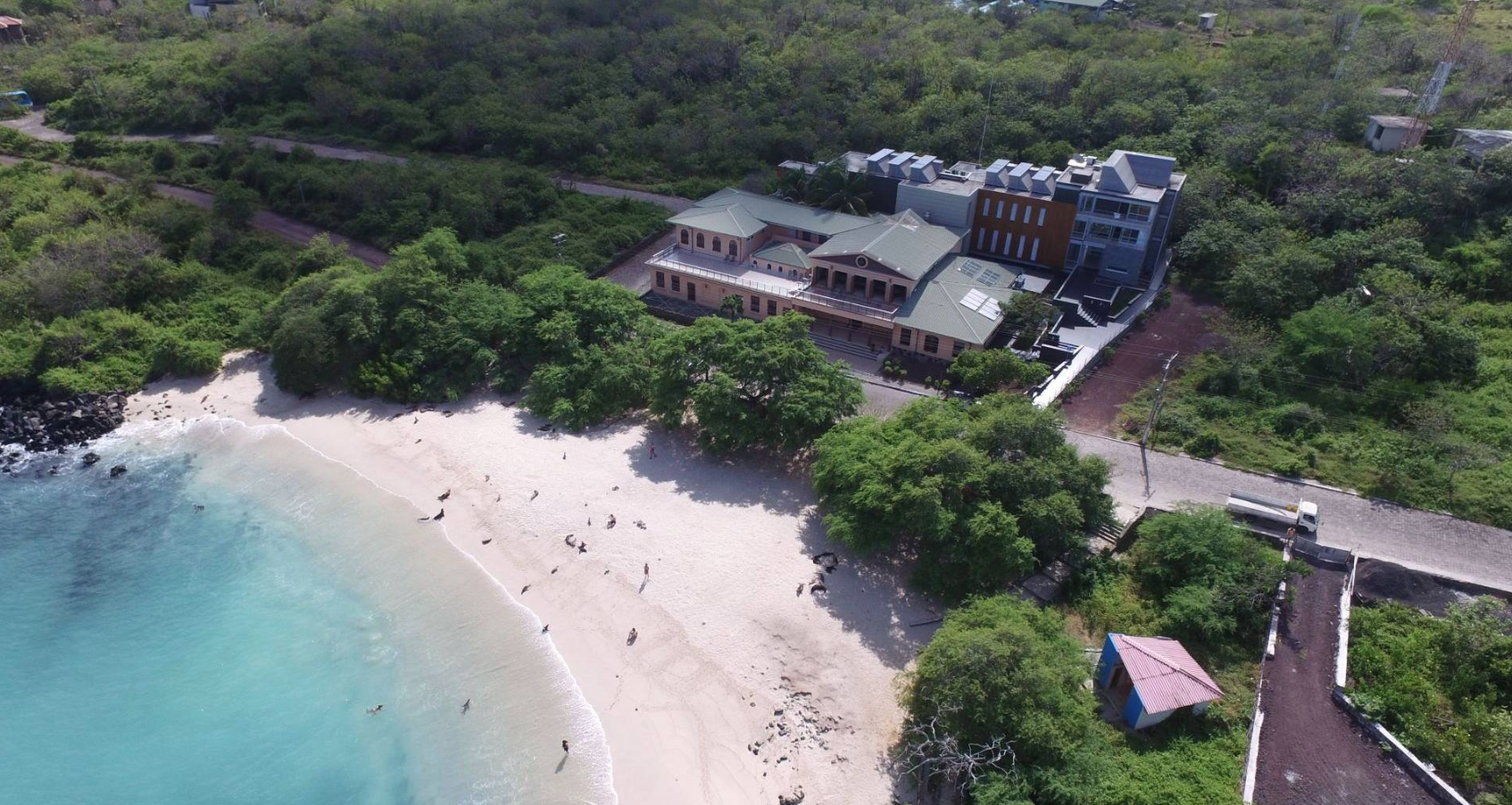Foto: Martín Narváez
El equipo del Proyecto del Tiburón Ballena de Galápagos (GWSP, por sus siglas en inglés), en colaboración con la Dirección del Parque Nacional Galápagos (DPNG) y el Galapagos Science Center de la Universidad San Francisco de Quito (GSC-USFQ), ha retornado recientemente de una expedición de 15 días al Arco de Darwin, en el lejano norte del archipiélago.
Durante la expedición, el equipo logró identificar 12 tiburones ballena distintos y marcar a 7 de ellos con dispositivos satelitales SPLASH, colocados con pinzas en la aleta. Estas marcas permiten rastrear tanto los movimientos horizontales como verticales de los individuos, aportando información clave sobre sus patrones de comportamiento en mar abierto.

Imagen 1. Buzo termina de colocar marca SPLASH con piza de aleta en tiburón ballena. ©GWSP
Uno de los logros más destacados fue el marcaje de un macho adulto de tiburón ballena, un hecho excepcional dado que cerca del 99% de los avistamientos en el Arco de Darwin corresponden a hembras adultas.
Se trata del primer macho adulto marcado en la historia del estudio del tiburón ballena en Galápagos. Este evento sin precedentes, junto al marcaje de tres hembras adultas, una juvenil y una subadulta, permitirá al equipo comparar los movimientos y uso del hábitat entre sexos y distintas etapas de madurez, contribuyendo a una comprensión más profunda sobre la biología y ecología de esta especie poco conocida.
Imágenes 2 y 3. Marcaje y verificación de macho adulto. ©GWSP
Además, se produjo un reencuentro sorprendente con una hembra adulta que fue vista por primera vez por el equipo en septiembre de 2012 en el mismo sitio de buceo del Arco de Darwin. Trece años después, fue identificada nuevamente, confirmando la fidelidad de esta especie a zonas específicas del océano. Este hallazgo resalta la importancia de la Reserva Marina de Galápagos (RMG) y sus aguas aledañas para esta especie que lo utiliza como un punto de navegación y potencialmente para temas reproductivos. También abre la posibilidad de analizar tasas de crecimiento a largo plazo, ya que su tamaño estimado se mantuvo en 13 metros entre ambos encuentros, lo que sugiere una tasa de crecimiento extremadamente baja al llegar a la adultez.

Imagen 4. Avistamiento confirmado vía el uso del algoritmo de Groth en www.sharkbook.ai ©GWSP
Al finalizar esta expedición, el equipo ha logrado alcanzar un registro total de 758 tiburones ballena distintos avistados dentro de la RMG desde inicios de los años 2000, con un total de 23 avistamientos entre años distintos. Este logro ha sido posible gracias al valioso apoyo de guías naturalistas, guías de buceo, pescadores artesanales de la RMG y visitantes a las islas, quienes han contribuido con observaciones y reportes a lo largo de los años.
Esta salida fue posible gracias al apoyo de la Dirección del Parque Nacional Galápagos, el Galapagos Science Center y la Universidad San Francisco de Quito, así como de nuestros donantes: Shark Project, Galápagos Shark Diving, Galápagos Conservation Trust, Planeterra, Sea The Future, Kau Family Trust, Garnett Family y todas las personas que creen y apoyan el trabajo que realizamos.

Imagen 5. Equipo de trabajo de la expedición GWSP Darwin 2025- De derecha a izquierda: Esteban Benavides, Jonathan Green, Luis Zambrano, Jenny Green, Maradona Guamanquishpe, Yuri Revelo, Sofía Green, Martín Narváez, Felix Valiente ©GWSP
Para más información sobre el trabajo del proyecto del tiburón ballena de Galápagos visitar:
https://galapagoswhaleshark.org/
Para más información contactar:
science@galapagsopwhaleshark.org –
Galápagos Whale Shark Project



